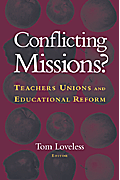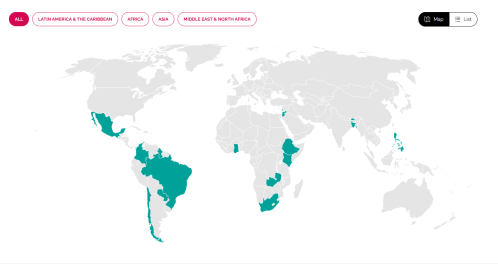In the case of school turnaround, as with so many other areas of K-12 policy, the Every Student Succeeds Act (ESSA) marks a dramatic departure from the NCLB era. Under ESSA, districts are free to choose how to intervene in low-performing schools, provided that the interventions they select meet the revised standards of evidence-based research under ESSA.
Many see these changes as laudable, providing districts with the autonomy they need to identify the turnaround strategy that best fits their local context. At the same time, flexibility in federal law does not by itself solve the puzzle of school turnaround. Here, I discuss why choosing and implementing an appropriate intervention might be easier said than done. Despite these barriers, I highlight some of the promising innovations that may help districts overcome these challenges.
New standards offer flexibility, but we still need more evidence-based programs
ESSA uses a tiered approach to defining “evidence-based” programs. School improvement plans, including targeted and comprehensive strategies, that use federal funds must fall in one of the top three tiers: strong, moderate, or promising. In each of these three categories, an intervention must demonstrate “a statistically significant effect on improving student outcomes” (decreasing levels of methodological rigor distinguish each category, where evidence meeting the “strong” threshold has the strictest criteria). As the Data Quality Campaign explains, under ESSA “[p]olicymakers may now choose the types of evidence that help them select the best resources and interventions suited to the specific needs of their communities.”
But in practice, even with these revisions, it is not a foregone conclusion that districts and schools will be able to identify appropriate evidence-based interventions. In absolute terms, the number of interventions that produce statistically significant effects is small, and not for lack of trying to identify effective programs. Established in 2002, the Department of Education’s Institute of Education Sciences and What Works Clearinghouse fund evaluations and review studies on education interventions, respectively. Yet a recent report from EdWeek notes that “a forthcoming meta-analysis based on the [What Works Clearinghouse’s] reviews found only 29 different interventions showed significant effects—and the average effect was small, particularly when the interventions were in messy real-school contexts instead of highly controlled laboratory settings.”
These results reflect the frustratingly slow pace of developing and refining effective interventions, as Martin West wrote about earlier this year. While the evidentiary standards under ESSA in theory provide schools with a broader array of interventions from which to choose, the first challenge that district leaders face is nonetheless selecting an appropriate intervention for their specific context from the small body of available, evidence-based programs.
This issue of identifying context-appropriate interventions is a sticking point when it comes to implementing evidence-based approaches. Mark Dynarski points out that many educators hesitate to implement programs, even those with evidence of efficacy, if the research was conducted in a context different from their own local situation. The underlying fear is that implementing a program that worked in one context may be a risky investment when implemented in another context—for low-performing schools, the high stakes may incentivize risk-averse decisionmaking.
Local buy-in matters
A related barrier to school turnaround that remains despite new flexibility in ESSA is generating sufficient local buy-in. This may seem like a “soft” requirement, and indeed, buy-in is much harder to quantify compared to other factors like cost. But we should not underestimate its importance in aiding (or scuttling) school turnaround implementation, particularly in the case of comprehensive reforms. Indeed, some of the most effective school turnaround programs, such as Success for All, require sustained commitment on the part of district, principals, and teachers to implement the program’s “comprehensive infrastructure.” Schoolwide reforms are effective in part because they do not offer quick-fix, Band-Aid solutions to deep-seated problems. Maintaining political willpower to implement the foundational changes that this intervention requires may be quite difficult.
Consider, for example, that schoolwide reforms can entail heavy costs: in Evansville, IN, over half the teachers left its “transformation zone” district after the first year of a turnaround strategy, which an administrator referred to as a “sobering and disruptive process.” Staying the course in the face of these challenges (and opting for transformative strategies in the first place) may be politically unpopular. In this particular case, Evansville administrators stuck to their plan, and this year 95 percent of teachers elected to stay.
While progress is possible, we should be careful not to hastily generalize from success stories. Under ESSA, as before, there is ample reason to worry that local elected officials, such as school board members and superintendents, may abandon this type of comprehensive turnaround strategy, with its high costs and long time horizon, before it has a chance to work. Indeed, this argument that the local politics of education can often be a barrier to reform is familiar territory (see, for example, Michael Petrilli and Rick Hess). Targeted strategies that are less disruptive and hold the promise of faster payoffs may be more appealing, despite recent changes that would otherwise facilitate schoolwide reform, including the new flexibility in ESSA on “evidence-based” requirements and the federal government’s encouragement of schoolwide (as opposed to targeted) interventions under ESSA.
Promising new developments
To summarize, my argument here is not that we should be pessimistic about school turnaround under ESSA. The new law provides states and districts with better opportunities to identify, fund, and implement promising school turnaround interventions in their lowest-performing schools. Without a doubt, this is progress. But at the same time, the potential under ESSA for turning around low-performing schools is much more likely to be realized if we help state and district leaders navigate (or break down) the remaining barriers I’ve discussed here.
Fortunately, a number of efforts to do so are underway. West observes that ESSA facilitates research and development through ongoing evaluation of promising research. Dynarski proposes an approach called “improvement science” to help bridge the gap between research and implementation, wherein researchers work with local education leaders to help them adapt effective programs to suit their context.
These innovative approaches will hopefully help districts leverage the flexibility in ESSA’s new “evidence-based” standards. Crucially, each of these strategies recognizes not only the need to keep building a body of rigorous research, but also the paramount importance of working with local education leaders to design and evaluate programs that districts could implement successfully.










Commentary
School turnaround under ESSA: Progress, but not a silver bullet
October 31, 2016